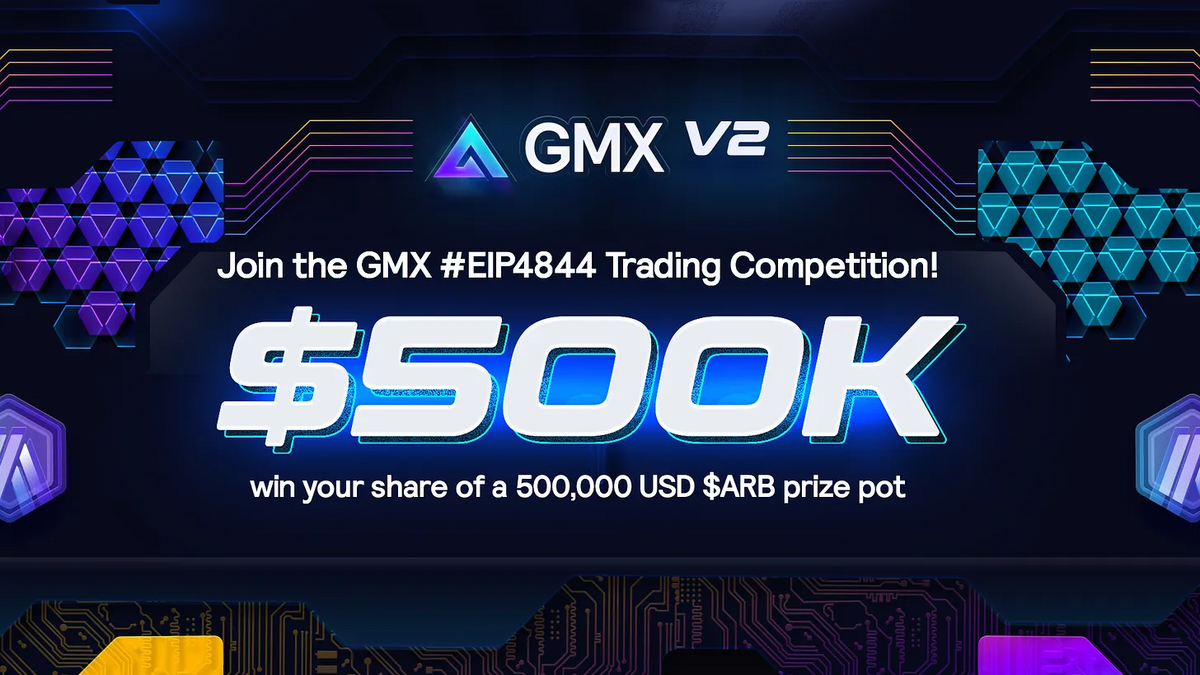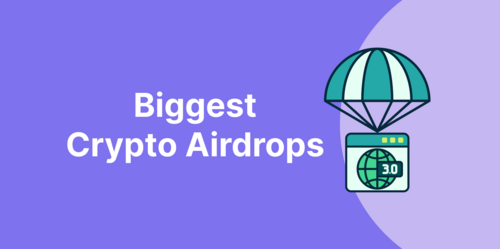Key Takeaways
-
Decentralized exchanges are one of the pillars of crypto as they allow for cryptocurrencies to be exchanged without holding custody or requiring an intermediary.
-
The three main types of DEXs are Automated Market Makers, Order books, and Aggregators.
-
Just like on a centralized exchange, DEXs do not only support spot trading, but also support derivatives trading such as perpetuals and options.
-
DEXs are similar to a business, with revenue, expenses, and earnings, and can be valued in a manner similar to traditional businesses as well.

The DeFi industry has grown tremendously in the past few years, reaching a peak total valued locked (TVL) of $181.22 billion on 2 December 2021. Even though the current total DeFi TVL has decreased since to $50.46 billion, of which $19.69 billion is currently held in decentralized exchanges (DEXs) as of time of writing.

Source: DeFiLlama
Given the black swan events that have occurred over the past year, especially the collapse of FTX, one of the largest centralized exchanges, crypto participants have started to understand the importance of self-custody, removing their funds away from centralized exchanges and into decentralized exchanges for better risk management.
This has ignited movement in the industry, with DEXs gaining in market share against CEXs and more users being more conscious about leaving funds in CEXs and opting to move their funds into their own cold wallet self-custody solution.
In this article, we will focus primarily on DEXs, how they work and make money, and what popular DEXs you should look out for!
Read our article about CEX vs DEX if you want to learn more about their differences!
What are DEXs?
Decentralized exchanges, or DEXs, are platforms that crypto traders can connect with using a web3 crypto wallet in order to perform trades using the help of smart contracts (self-executing programs) without the need for a middleman or centralized entity holding custody of the user’s tokens.
Over 100 million investors frequent these decentralized platforms, and daily volume on DEXs regularly exceeds billions of dollars. DEXs have evolved, growing from only supporting spot trading, to derivatives trading such as perpetuals and options trading.
But without a centralized entity to manage trades, how do DEXs work?
What Are the Different Types of DEXs and How Do They Work?
Automated Market Maker DEXs
An automated market maker (AMM), which was made popular by Uniswap, helps with market orders and tracking the price of digital assets without the need for traditional market makers. This is a game changer when it was introduced in crypto, as it allowed anyone to provide liquidity to markets, which was traditionally only possible by licensed market makers which is difficult to become for most independent investors. However adding liquidity to liquidity pools on a DEX can result in impermanent loss, which occurs when liquidity providers receive a different amount of assets upon withdrawal, which usually occurs due to changes in token price.

Source: Uniswap
Instead of connecting buyers and sellers, AMMs use community-funded liquidity pools to carry out buy and sell orders. Liquidity pools consist of two distinct tokens. When someone buys or sells a token through a liquidity pool, the ratio of the tokens in the pool fluctuates and the price of the pool's tokens changes.
In an AMM pool for example, if a liquidity pool has 100 token A and 200 token B, where 1 token A is worth 2 of token B. When someone buys 50 token B for 25 token A, the pool now has125 token A units and 150 token B units, and the pool's ratio changes. The new ratio implies that 1 token A is worth 1.2 token B, and that’s how the price changes when users buy and sell tokens from the pool.
Most AMM pools use a constant product curve, which in simple terms means that liquidity will exist at any price, from $0 to infinity. However there are also other types of curve that suit certain tokens, such as stableswap curve to swap between stablecoins.

Source: Curve Whitepaper
Because there are many AMM pools, each with their own liquidity, an asset's pricing is rarely the same on every DEX. This opens up the opportunity for arbitrageurs to buy assets from lower-priced pools and sell into higher-priced pools, averaging the price between the two pools while pocketing risk-free profit if it covers the transaction and gas fees.
Order Book DEXs (Off-Chain and On-Chain)
Order book DEXs and centralized exchanges are similar. Both platforms allow traders to submit buy orders at the price they want to pay for a given token, and sell orders at the price they want to sell the asset for.

Source: Image taken from dYdX
These orders are known as limit orders which cannot be done on most DEXs as typically DEXs only allow for market orders which instantly executes at the current market price. The ability to do limit orders is one of the main differentiation between order book DEXs and AMM DEXs.

Source: Image taken from dYdX
The order book collects these offers and connects buyers and sellers to complete trades. Some order books DEXs also offer perps for users to go long as well as short (profit if the token goes down), and have leverage mechanisms to help users increase their profit potential, but it also increases their loss possibility.
Order books can be done on-chain and off-chain. On-chain order books enable traders to purchase and sell crypto with the full security of the network as every order and transaction gets uploaded onto the blockchain. However the drawback is that this increases the cost and speed of transactions, and as we know in trading, cost and speed are two important factors for traders.
Off-chain order books were created to alleviate this. A user would need to deposit their assets to an off-chain account and order book, where all the transactions happen off the blockchain. This results in the security being more centralized, akin to using a centralized exchange; however, users will enjoy fees and speed that are similar to CEXs. Whenever the user withdraws assets from their off-chain account, the transaction is settled on-chain.
DEX Aggregators
With AMM DEXs being the more popular type of DEX so far, many AMM DEXs were appearing which was fragmenting liquidity as each AMM pool needed to be separately filled. DEX aggregators were created to solve this issue.
DEX aggregators are similar to using an aggregator to find the cheapest flights online; they help you search across multiple DEXs for the cheapest path, eliminating the need to manually find the best price for a token, and good aggregators route through multiple pools as well.
These platforms search across multiple DEXs to combine their liquidity, helping users to avoid slippage on large orders, lower trading fees, and offer the best prices for tokens.
The only drawback is that this would increase the gas fee if multiple AMMs are used, which can be costly when done on Ethereum which is known for their high transaction fees.
Let’s take a look at some of the advantages and disadvantages of DEXs.
Advantages of DEXs
Non-Custodial
Users retain control over their private keys when using DEXs. This prevents funds from being lost due to mismanagement of funds from exchanges and avoids having their funds frozen, or being prevented from withdrawing, or outright taking their funds if they become insolvent. Additionally, it allows for 24/7 trading even when CEXs are down due to overload or maintenance.
Private and Permissionless
Users do not need to give any information about who they are in order to use the DEX, which is not possible for CEXs as they are required by regulations to have the information from their users in order to operate. This also means that DEXs can be used by anyone, anywhere in the world as long as there is internet access, and will not be subjected to being geo-blocked.
Early Mover
Most tokens are usually created and tradable first on a DEX before being listed on a CEX, thus allowing DEX traders to potentially buy tokens at a lower price when they are less popular before they are listed on a CEX, which usually inflates valuation.
More Composability
On DEXs, users are also able to provide liquidity as mentioned previously. On top of providing liquidity, for advanced DeFi users who know what they are doing, it is possible to use that liquidity receipt token on some lending markets to be borrowed against, unlocking more capital. Such advanced features are not available on CEXs, and can only be done on DEXs at the moment.
Disadvantages of DEXs
Increased Risk and Complexity
It is easy for a user’s funds to be lost forever if they send their funds to the wrong address or wrong network, or approve a malicious contract that drains their wallet. The increased risk and complexity is one of the core reasons why many traders still prefer to trade on a CEX that protects their funds from being taken away by malicious contracts.
More Responsibility
Decentralized exchanges shift the accountability to users. Users trade directly from their wallets using smart contracts instead of letting CEXs perform the trade for them. Although users fully own their assets, they are now also accountable for the security of their funds. This means they have to be conscious about their own digital security, such as being wary of downloading malicious files that can cause their seed phrase to be leaked to a hacker, as well as storing their own seed phrase securely, as there is no way to retrieve their seed phrase if they lose it as there is no ‘forget password’ function.
Higher Fees
The average DEX charges 0.3% per trade, which is higher than CEX trading fees which are usually around 0.1% per trade. Additionally, on an Ethereum DEX, transactions take several seconds and gas fees are usually around $10 and can cost upwards of $100 during congested periods, whereas trading on a CEX is both fast and does not incur additional gas fees.
Sandwich Attacks
Some trades are susceptible to frontrunning, which means when you perform a trade, a trader sees it and frontruns the trade by paying more gas fees, proceeded by your trade and backrunning the trade, to create risk-free profits. This is also known as a sandwich attack or an MEV attack. There are several ways to prevent this and is mitigated on more sophisticated DEXs and networks.
No Legal Recourse
As DEXs operate in a grayzone where it is not owned by a legal entity, if something happens, the user may not be able to receive help from a dedicated customer support. In the worst case scenario where funds are lost, they are not able to go through the standard legal route to claim for loss of funds. Therefore, it is very important that users only deposit what they are comfortable with losing, in the event that the DEX gets exploited. As DeFi and DEXs advances, the security improves and the chances of exploits is reduced, but it is likely that nothing will remain 100% safe.
What Are the Most Popular Decentralized Exchanges?
Almost every major blockchain ecosystem has a DEX; some ecosystems even have several popular DEXs. After all, DEXs are an essential pillar of any peer-to-peer DeFi ecosystem.
Knowing which are the well-known exchanges is advantageous because it will often have larger liquidity pools for trading assets, which means reduced slippage and better prices. It also reduces the chances of any exploits, especially when providing liquidity as it is likely more secure and has undergone more audits or gone through more battle-testing.
Let’s explore some of the popular decentralized exchanges, which can also be found on CoinGecko.
UniSwap (UNI)
UniSwap is the most popular DEX in crypto and has the largest spot volume. This DEX popularized the concept of 50-50 AMM pools with one of the simplest trading UI, requiring just a few clicks to make a swap.
It is an on-chain trading platform and offers a safer way to trade by keeping funds secure, since there is no centralized intermediary to hack, and it is fully permissionless as it doesn’t charge listing fees for new tokens.
The implementation of Uniswap v3 offers concentrated liquidity, which makes slippage even lower, especially for stablepairs, when users are swapping large amount of stablecoins.
dYdX (dYdX)
Currently the largest decentralized derivative exchange, dYdX brings in over a billion dollars of volume daily, with hundreds of millions of open interest. It rose in popularity as it provided numerous perpetual markets for users to trade with deep liquidity and leverage of up to 20x.
dYdX is also an off-chain order book, allowing for high speed and no gas fee trading, an experience that is similar to a centralized exchange.
The dApp is moving to Cosmos where they’ll be their own sovereign app chain, as Cosmos allows for more customizability to the chain where hopefully they can provide an even better trading experience.
Gains Network (GNS)
Gains Network is a decentralized leveraged trading platform on Polygon and Arbitrum with up to 150x leverage and 1000x for forex trades.
They have a unique liquidity mechanism that allows anyone to deposit stablecoin into a vault, which acts as counterparty liquidity by using the stablecoin to provide liquidity simultaneously to all markets. This is how Gains Network is able to support close to 100 different markets with liquidity for all of them.

Source: Image taken from Gains Trade
GMX (GMX)
GMX is an innovative decentralized cryptocurrency trading platform on Arbitrum and Avalanche, creating the first zero slippage trading with up to 50X leverage for perpetuals.
Because of deep liquidity and zero slippage, it is regularly one of the top five dApps in terms of fees generated, causing it to be very popular for liquidity providers, especially during a sideways and choppy market.
Its liquidity provider token, known as GLP, is another aspect of GMX that made it popular. This liquidity token earns 70% of the platform fees and also acts as the counterparty liquidity to traders, earning when traders lose and losing when traders profit. As statistics have shown, net traders lose money overtime, meaning they lose to GLP holders, giving GLP holders additional profit.

How Do DEXs Make Money?
Most DEXs charge fees for every transaction – often a 0.3% fee regardless of whether a user is buying or selling. This means if a trader buys a token and sells a token immediately, it would cost 0.6% to the trader. However, only a portion of this goes to the protocol.
DEXs that use community-funded liquidity pools often reward liquidity providers with a portion of the fee revenue as well as additional governance tokens as incentives, which can be viewed as giving away money, or a type of marketing expense.
How Do You Value a DEX?
A DEX protocol is similar to a business as it generates revenue based on trading volume. Just like there are many ways to value a company, there are many metrics one can use to determine the valuation of a DEX.
The liquidity incentive reward can also be viewed as marketing expenses, and thus a protocol’s profit or earnings can also be viewed as revenue – expenses.
One of the more popular ways is to use the price-to-sales or price-to-earnings ratio, as it factors the market cap to the revenue that the protocol brings, which is also a popular metric used to value companies.
For example, using the price-to-sales ratio, if a DEX has a monthly trading volume of $30 million and charges a flat 0.3% fee with 20% going towards the protocol, this means the monthly protocol revenue is $30 million x 0.3% x 20% = $18,000.
The annualized revenue can be estimated by multiplying the monthly revenue by 12, giving $216,000. If the DEX has a market cap of $10 million with an annual revenue of $216,000, the circulating P/S ratio would be around 46x, where the lower the P/S ratio the better.
Here's a table illustrating these numbers.

Looking at tokenterminal, the top circulating P/S ratios are all less than 10x.

Other interesting metrics include TVL-to-earnings ratio, which gives an idea of how effectively the DEX is utilizing its capital to generate earnings. The lower the TVL-to-earnings ratio the higher the capital utilization as it uses lesser TVL to generate earnings. However, these are secondary metrics, and price-to-sales or earnings ratio is still one of the most important metrics to look at.
Conclusion
Decentralized exchanges are one of the pillars of any cryptocurrency ecosystem and will likely continue to be a trend in DeFi for years to come.
Their privacy and non-custody features aligns them with the ethos of crypto, making them an attractive option for most cryptocurrency traders who want to have fully control of their tokens. It also appeals to users who are looking to earn passive rewards on their assets by providing liquidity.
With centralized exchanges still taking the lion’s share of volume, DEXs are continuing to innovate in order to capture some of this lucrative market. With the improvement in blockchain technology, the regulatory concerns from governments, and the mismanagement of funds from CEXs, DEXs have a bright future and will likely continue to grow.

CJ is a business graduate that has been involved in crypto for 4 years and specializes in DeFi protocols. He is also interested in TradFi becoming DeFi, and has written for ByBit, SwitcheoLabs, and others. Follow the author on Twitter @fishmarketacad





 Or check it out in the app stores
Or check it out in the app stores
